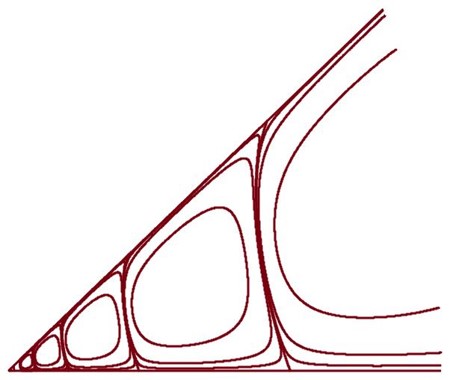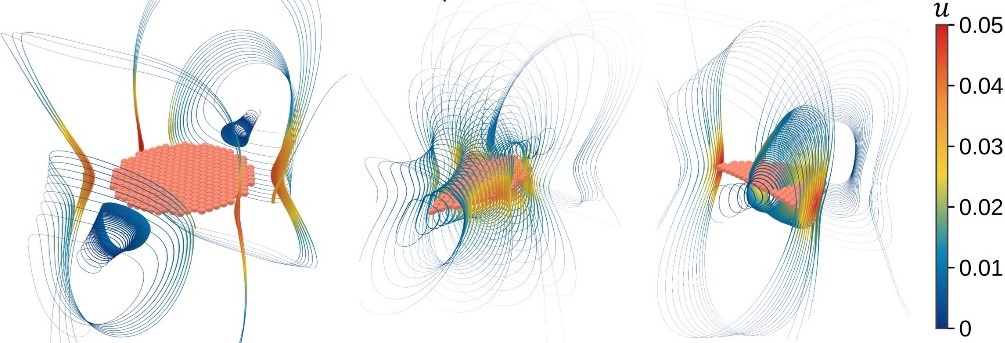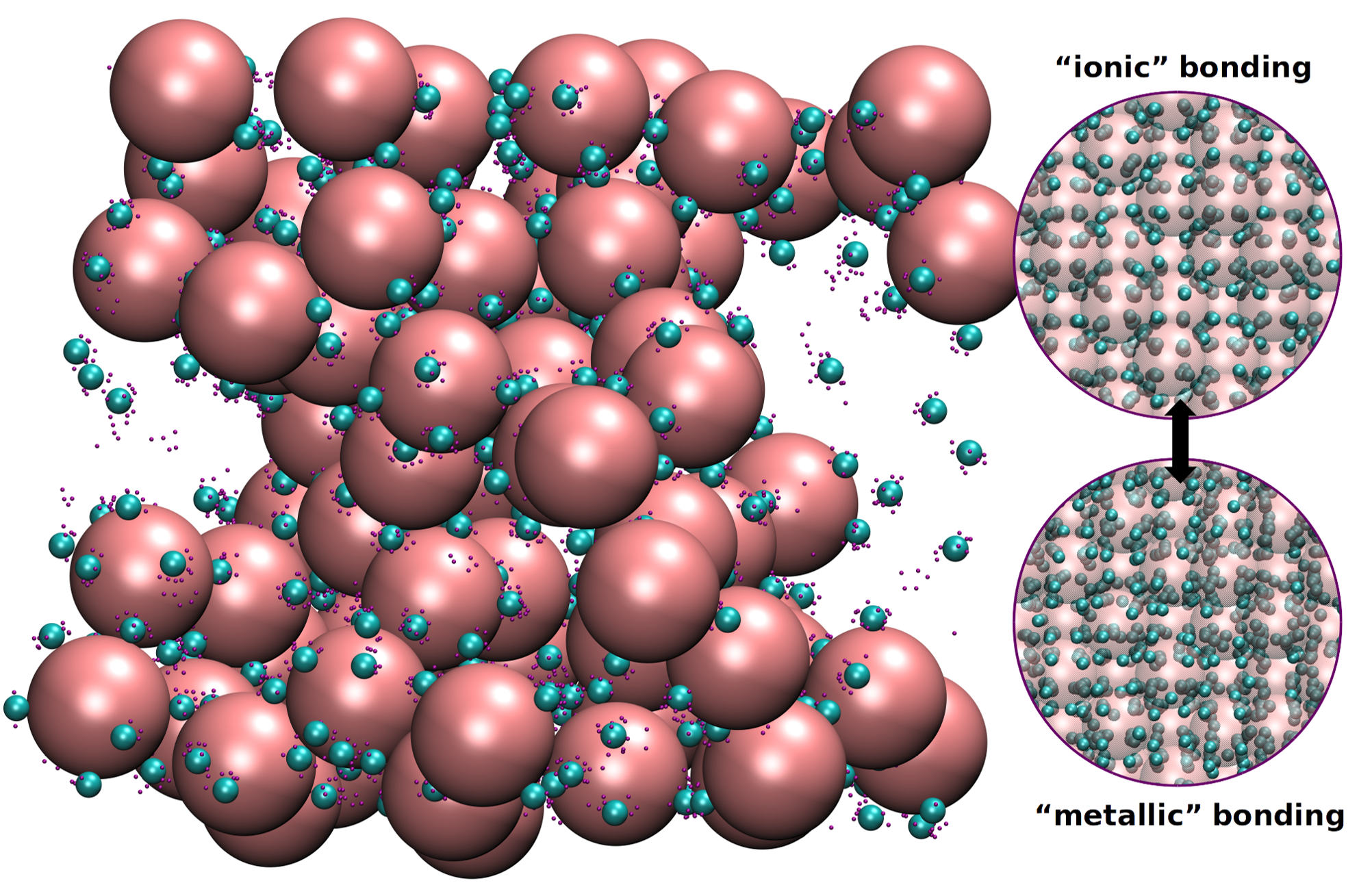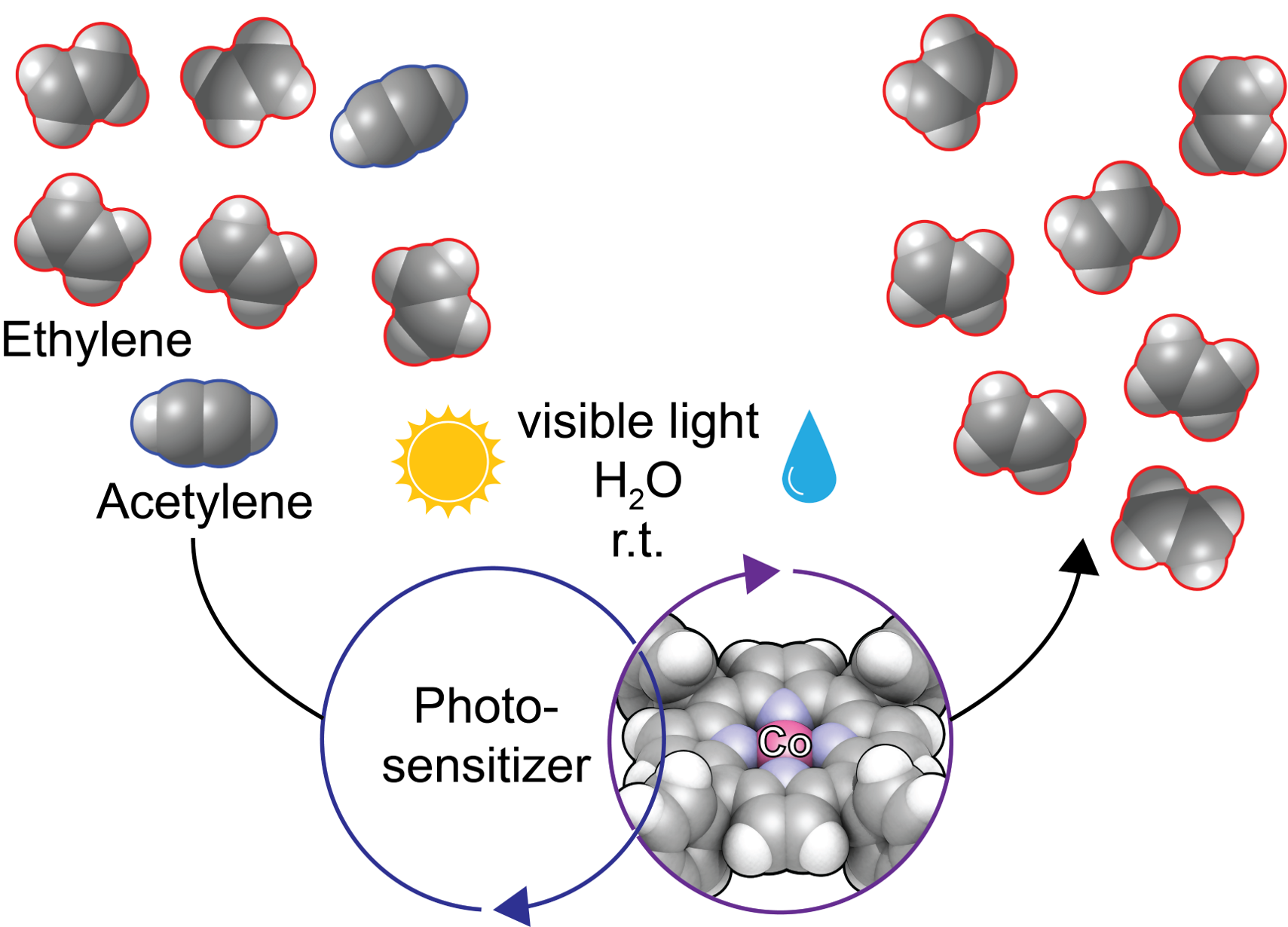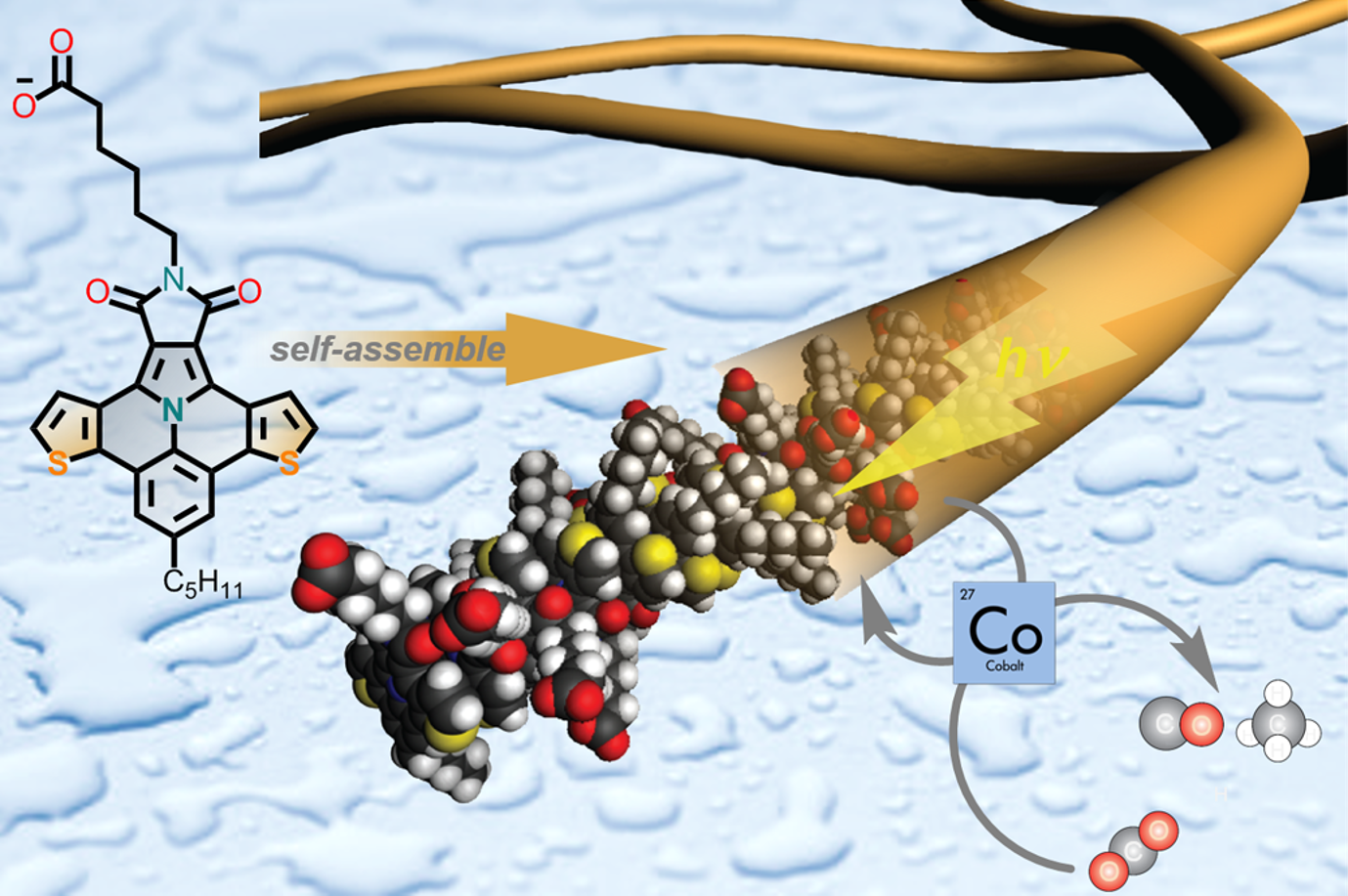Research Highlights
Interfacial Implications of Odd Viscosity
Odd viscosity passivizes Moffatt vortices, decreasing their size and reducing their intensity by creating normal stress-induced shear stress at the liquid-gas interface. Odd viscosity shows a tendency to moderate singular behavior in corner flows with a free surface.
Full Highlight
Elastic Sheet Swimming using Dynamic Magnetic Fields
Swimming of homogeneous 2D elastic sheets made from magnetic particles.
Full Highlight
Superionics in Colloidal Crystals
Crystal of asymmetric in size oppositely charged nanoparticles (NP) in equilibrium with a reservoir undergo ionic to metallic bonding transition where the small NP lattice melts and the crystals expand.
Full Highlight
A Greener, Photochemical, Route to Polymer-grade Ethylene
A visible light-powered cobalt porphyrin catalyzes near 100% conversion of acetylene to ethylene with >99% selectivity.
Full Highlight

